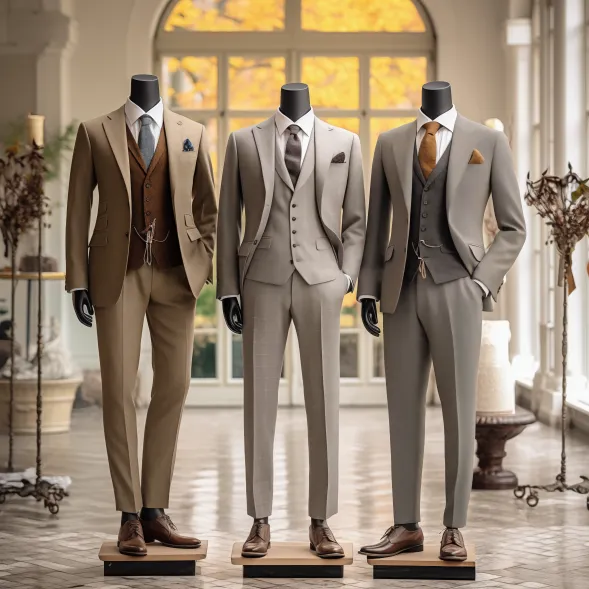When it comes to men’s fashion, few experiences rival the allure and grandeur of bespoke tailoring. This venerable craft, steeped in tradition and precision, offers a sartorial elegance that transcends time. It’s not merely about clothing; it’s an art form that epitomises luxury and exclusivity. At the heart of this distinguished world lies Savile Row, a name synonymous with the pinnacle of tailoring excellence. Nestled in the bustling streets of London, Savile Row is a beacon of sartorial splendour, revered globally for its unparalleled craftsmanship in bespoke tailoring.
The History and Legacy of Savile Row
The rich tapestry of Savile Row’s tailoring history is a story woven with precision, elegance, and an unwavering commitment to sartorial excellence. For centuries, this London street has been the gold standard for bespoke tailoring, attracting a clientele that values unparalleled craftsmanship and timeless style. Amidst this esteemed lineage stands the Hidalgo Brothers, a name e synonymous with the highest standards of bespoke tailoring.
Our dedication to the craft aligns seamlessly with the storied traditions of Savile Row suits. We blend this heritage with our unique expertise, ensuring that each garment we create is a personal legacy in fabric and thread. From the initial meeting to the final fittings, every element of our process is meticulously crafted to deliver nothing short of perfection.
Why Bespoke Tailoring Is the Pinnacle of Men’s Fashion
Bespoke tailoring represents the zenith of men’s fashion, a tradition that has flourished through time. But what is a bespoke tailored suit? It is a tailoring that marries the finest fabrics with expert craftsmanship, resulting in unparalleled fit and finish. Its essence lies in the meticulous attention to detail and the personalised fit achieved. Each bespoke suit is crafted to be a second skin, accentuating the wearer’s best features while offering unparalleled comfort.
Using high-quality materials and traditional tailoring techniques ensures that each piece is a masterpiece. Owning a bespoke suit Savile Row is more than a fashion statement; it’s a symbol of exclusivity and status, a testament to an individual’s appreciation for the finer things in life. In this world of bespoke excellence, we at Hidalgo Brothers pride ourselves on delivering nothing short of perfection, encapsulating the true spirit of Savile Row tailoring in every stitch.
The Bespoke Tailoring Process
The bespoke tailoring process is a journey of meticulous craftsmanship and personalisation. We start with an in-depth consultation to understand your style preferences and needs. The next step is selecting high-quality fabrics in a variety of textures and colours to meet your individual preferences. Our expert tailors then take precise measurements to ensure a perfect fit. Attention to detail is paramount at every stage, from the initial cutting of the fabric to the final stitching. The craftsmanship involved in creating a custom-made suit is a skill honed over the years, ensuring each garment is a unique work of art tailored to the individual’s specifications. This process guarantees a superior fit and allows for a level of customisation that is unmatched in ready-to-wear clothing.
Discover the Best of Bespoke Tailoring With the Hidalgo Brothers
Choosing the Hidalgo Brothers for your bespoke tailoring needs guarantees you a perfect fit and an experience in luxury and exclusivity. Our commitment to detail, use of high-quality materials, and exceptional craftsmanship ensure that we create some of the best Savile Row suits available. We invite you to experience the unparalleled elegance of a bespoke suit in London. Book a consultation or visit our store on Savile Row to begin your journey into the world of bespoke tailoring, where each British bespoke suit is a personal statement of style and sophistication.

